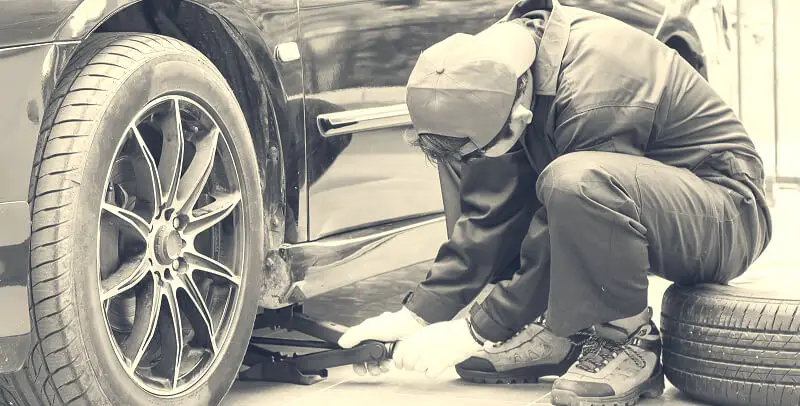Understanding Tire Sidewall Height

Tire sidewall height, often overlooked by vehicle owners, plays a crucial role in determining a vehicle’s performance, handling, and ride comfort. This article aims to comprehensively understand tire sidewall height, its advantages and disadvantages, and the factors to consider when selecting the appropriate tire sidewall height for your vehicle.
How To Calculate Tire Sidewall Height?
To calculate the tire sidewall height, you first need to locate the tire size information, which is usually imprinted on the sidewall of the tire. This information is represented by a series of numbers and letters, such as 225/45R17.
The first number (225) indicates the tire width in millimeters, while the second number (45) represents the aspect ratio, and the last number (17) refers to the wheel diameter in inches.
To calculate the sidewall height, multiply the tire width (225) by the aspect ratio (45%) and divide the result by 100. For this example, the sidewall height would be (225 x 45) / 100 = 101.25 millimeters.
Advantages Of Low Tire Sidewall Height
- Improved handling and stability: Low-profile tires have a smaller sidewall height and provide better handling and stability due to their stiffer sidewalls and reduced sidewall flex.
- Better performance: Low-sidewall height tires are often used on performance and sports cars as they offer improved grip, quicker steering response, and better cornering capabilities.
- More responsive steering: The stiffer sidewalls of low-profile tires lead to more responsive steering, allowing drivers to feel a greater connection with the road.
Disadvantages Of Low Tire Sidewall Height
- Increased risk of damage: Low-sidewall height tires are more prone to damage from potholes, curbs, and other road hazards due to their reduced cushioning.
- Rougher ride quality: Vehicles equipped with low-profile tires may experience a harsher and noisier ride due to the reduced sidewall height.
Advantages Of High Tire Sidewall Height
- Smoother ride quality: Tires with a higher sidewall height offer a more comfortable ride as they can better absorb road imperfections and vibrations.
- Better shock absorption: The increased cushioning provided by high sidewall height tires helps protect the vehicle’s suspension components from damage.
Disadvantages Of High Tire Sidewall Height
- Reduced handling and stability: Tires with a larger sidewall height have more sidewall flex, resulting in reduced handling and stability, especially during high-speed cornering.
- Poorer performance: High sidewall height tires typically offer less grip, slower steering response, and reduced cornering capabilities when compared to low-profile tires.
Factors To Consider
The sidewall height of a tire is the distance between the rim and the outer edge of the tire. When choosing the sidewall height of a tire, there are several factors to consider, including:
- Vehicle type: The type of vehicle you drive is a crucial factor when choosing tire sidewall height. Sports cars and performance vehicles typically require low-profile tires for optimal handling and performance. At the same time, family sedans, SUVs, and trucks may benefit from higher sidewall heights for a more comfortable ride.
- Driving conditions: The driving conditions you frequently encounter should also influence your decision. If you frequently drive on rough roads or encounter a lot of potholes, a higher sidewall height may provide better shock absorption and reduce the risk of tire damage. On the other hand, if you primarily drive on well-maintained roads and prioritize handling and performance, low-profile tires may be more suitable.
- Personal preferences: Your preferences play a significant role in choosing the appropriate tire sidewall height. Some drivers prioritize comfort and smoothness, while others value performance and handling. Consider your priorities and how they align with the advantages and disadvantages of low and high-sidewall height tires.
Conclusion
In conclusion, tire sidewall height significantly impacts vehicle performance, handling, and ride quality. By understanding the advantages and disadvantages of low and high sidewall heights and considering factors such as vehicle type, driving conditions, and personal preferences, you can make an informed decision when selecting the right tires for your vehicle.
Choosing the appropriate tire sidewall height is essential based on your needs and priorities. Low-profile tires may be the ideal choice for drivers who prioritize performance, handling, and responsiveness. On the other hand, if you value ride comfort, shock absorption, and reduced risk of tire damage, high sidewall height tires may be more suitable.

